5 Toxins Hiding in Your Sunscreen

Remember that time you got way too much sun? We’ve all been there. Maybe you fell asleep at the beach enjoying the sea breeze, or spent the day gardening. It’s only hours later that you realize you have a lobster-like complexion. These sunburns can sting, itch, and even cause painful blisters.
While sunburns typically go away in a few days, the harm done to our skin lasts. Even one blistering sunburn can increase our chances of enduring skin damage. That means we need to make sure to protect ourselves every day with sunscreen.
There are thousands of different sunscreen products out there. However, most of these lotions, aerosols or creams can be loaded with toxic chemicals. Many of these toxins are endocrine disruptors that can interfere with hormones in the body. They can impact the thyroid, reproductive system, metabolism and more.
Why it’s important to wear sunscreen
The sun is the center of our solar system and its rays give us light, warmth, and allow plants and animals to thrive on our planet. It also helps our body to create vitamin D, which is important for our bones, blood cells, and immune system.
However, the sun’s ultraviolet (UV) rays can damage our skin. The ultraviolet radiation that comes from the sun can penetrate the surface of the skin, which can lead to superficial changes like dark spots, and to an increased risk of skin cancer.
Fortunately, sunscreen can combat the harm caused by too much exposure to the sun. Nowadays, we can spend hours basking in the sun as long as we remember to apply sunscreen. Although sunscreen is our trusted beach day companion, we still need to be cautious. Many manufacturers use chemicals in their sunscreens that are toxic.
Don’t take these 5 toxins on your beach vacation
Avoid sunscreens with these troublesome toxins on your vacation. These can pose a potential threat to humans as well as the environment. Check ingredient labels for the following toxins.
1. Oxybenzone
Oxybenzone is a chemical sunscreen that absorbs UV rays, preventing them from penetrating the skin. A common main ingredient in many sunscreens, oxybenzone may block UV rays, but with a toxic price.
Despite oxybenzone’s ability to prevent sunburn, research shows it is a potential hormone disruptor and allergen to avoid.
- A review of research on oxybenzone (or benzophenone-3) showed an association with harmful birth outcomes, such as low birth weight (1).
- Studies also show that oxybenzone can act as an endocrine disruptor and may increase the risk of endometriosis (2).
- The National Toxicology Program found that rats with high levels of exposure to oxybenzone showed signs of thyroid tumors (3).
2. Octinoxate
Like oxybenzone, octinoxate is a chemical sunscreen. It’s used because of its ability to absorb UV rays and thus, prevent damage to the skin. However, several countries have banned the ingredient because of its harmful effects. The State of Hawaii has also banned both octinoxate and oxybenzone due to concerns for aquatic life (4).
Like oxybenzone, octinoxate doesn’t just sit on the surface of the skin. These chemicals are absorbed into the bloodstream where they can impact hormones.
3. Avobenzone
Avobenzone is yet another lab-made chemical sunscreen. This common ingredient is included to offer broad spectrum protection against UVA and UVB rays. But avobenzone on its own is an unstable molecule that needs additives to be properly utilized in sunscreen products.
- A study on sunscreen usage showed that a single use of this sunscreen resulted in a high blood concentration of avobenzone. This level exceeded the safety threshold established by the Food and Drug Administration (7).
- Research shows that avobenzone can disrupt the endocrine system. This can result in impaired hormone function, especially testosterone (8).
4. Parabens
Take a look at your cosmetic products. This includes sunscreens, make up, skincare, lotions and deodorants. Do you see parabens on their ingredients lists?
You may very likely see the ingredients methylparaben, ethylparaben and propylparaben. Cosmetics and personal care items are rife with parabens because they are used to maintain the stability of the products. However, parabens are known endocrine disruptors.
5. Fragrance
When you catch the scent of sunscreen, you likely think of beach vacations, summer camp, and days by the pool. Skin and body care products almost always have a pleasant aroma due to added fragrances. But if those fragrances aren’t plant-based, there’s no telling what’s really behind that scent.
Due to loopholes in the law, companies don’t have to disclose fragrance ingredients. As a result, fragrances can be full of unregulated toxic additives. These toxins are then directly absorbed into the body via the skin and lungs (12).
Mystery fragrances can contain many of the same chemicals used to block UV rays, and in turn can cause:
- Allergic reactions and dermatitis
- Exacerbation of eczema and psoriasis
- Acne and breakouts
- Headaches
- Respiratory problems
Safer sunscreens for your family
To avoid toxic fragrances, it’s in your family’s best interest to opt for naturally-derived, clean, unscented sunscreens. Although they may not smell like a tropical getaway, they’re just as effective.
Physical sunscreens are generally safer. These sunscreens feature zinc oxide which acts as a physical barrier to the sun’s rays. While often associated with being thick or greasy, there are now many brands that go on smoothly and blend easily.
Chemical sunscreens come with a long list of safety concerns. To make sure your sunscreen isn’t filled with toxins, check the ingredients list. You can also run it through the Environmental Working Group’s (EWG) sunscreen guide to make sure it’s ok to use.
Detox to offset toxin exposure
Learning about all of the toxins in our environment can be overwhelming. Toxins are found in our sunscreen, cosmetic products, household cleaners, food and water.
Still, there are many ways to offset our exposure to toxins. You can start by incorporating a detox supplement like zeolite into your wellness routine. By regularly detoxing, you’re helping your body release any toxins it’s holding onto. By minimizing the levels of toxins in your body, you may feel more energized, focused, and healthy.
If you’re committed to minimizing your toxin exposure, try:
- Checking product labels and ingredients for common toxins.
- Shop for natural, clean, organic brands.
- Eat lots of organic fruits and vegetables that are full of antioxidants.
- Use a zeolite detox like Pure Body Extra to help bind to toxins in the body.
When it comes to sunscreen, pass on that orange and blue spray can and opt for a healthier alternative to protect you and your family from the sun’s UV rays. We can all take a stand against toxins, one clean product at a time!

